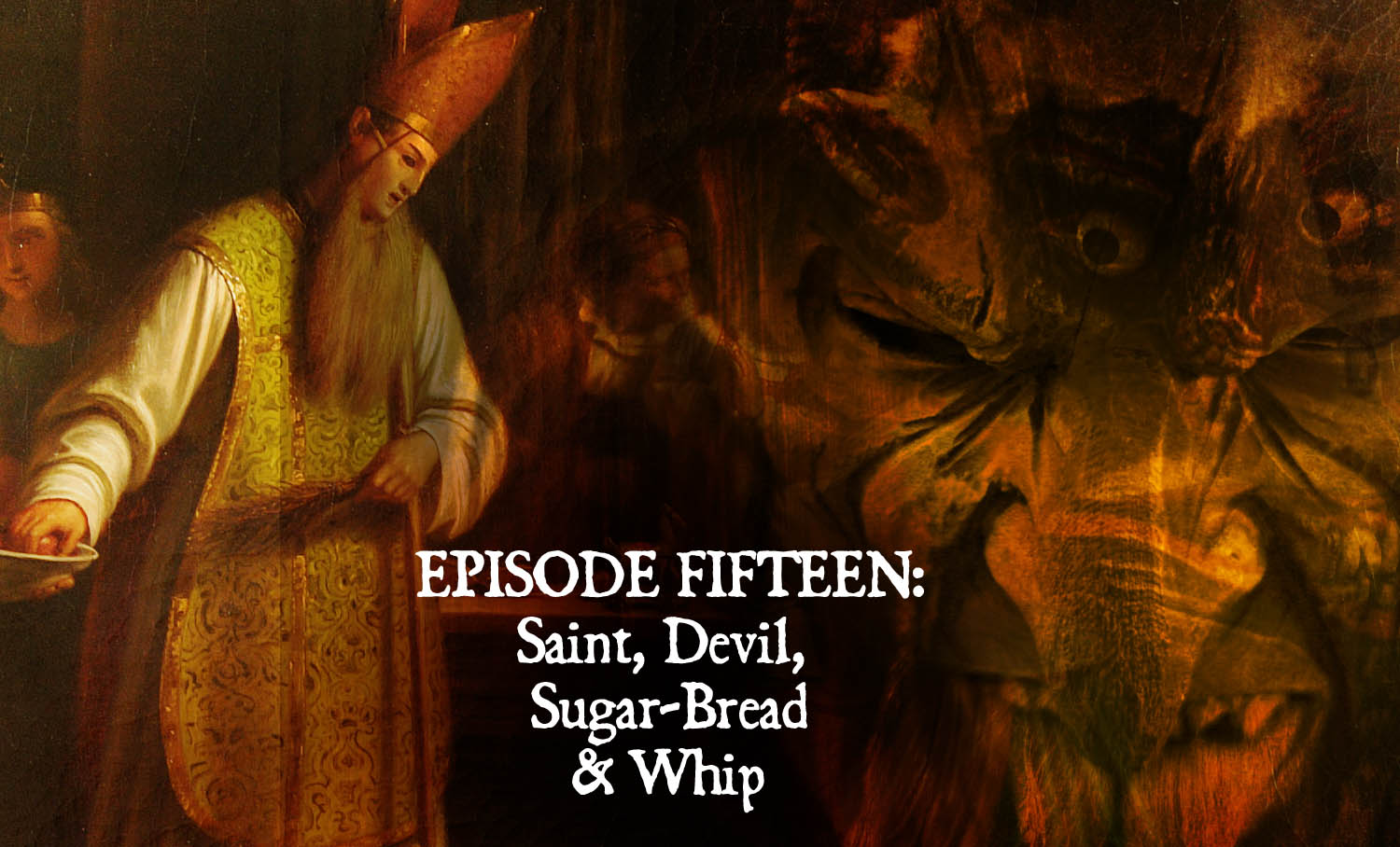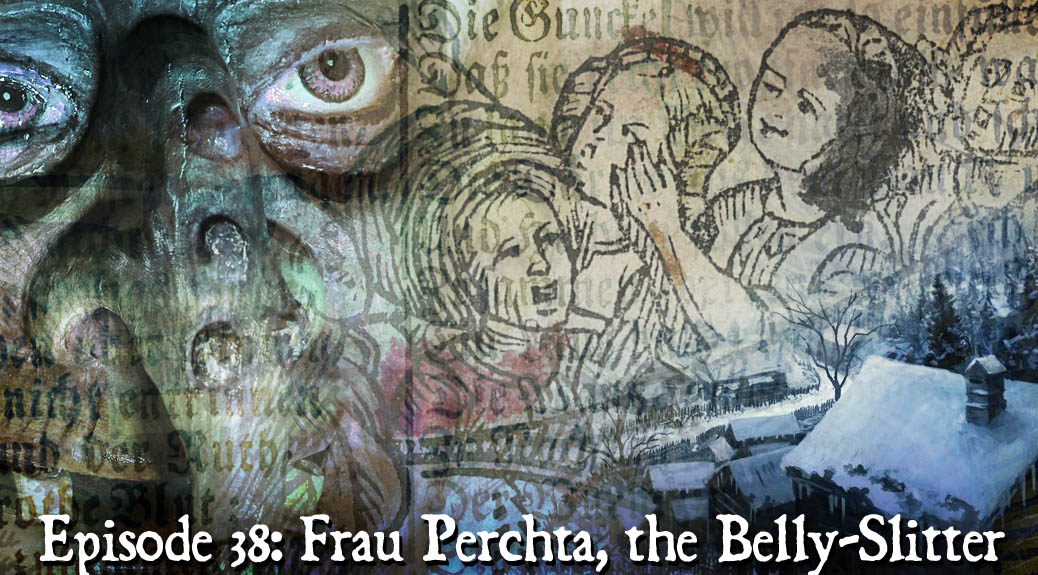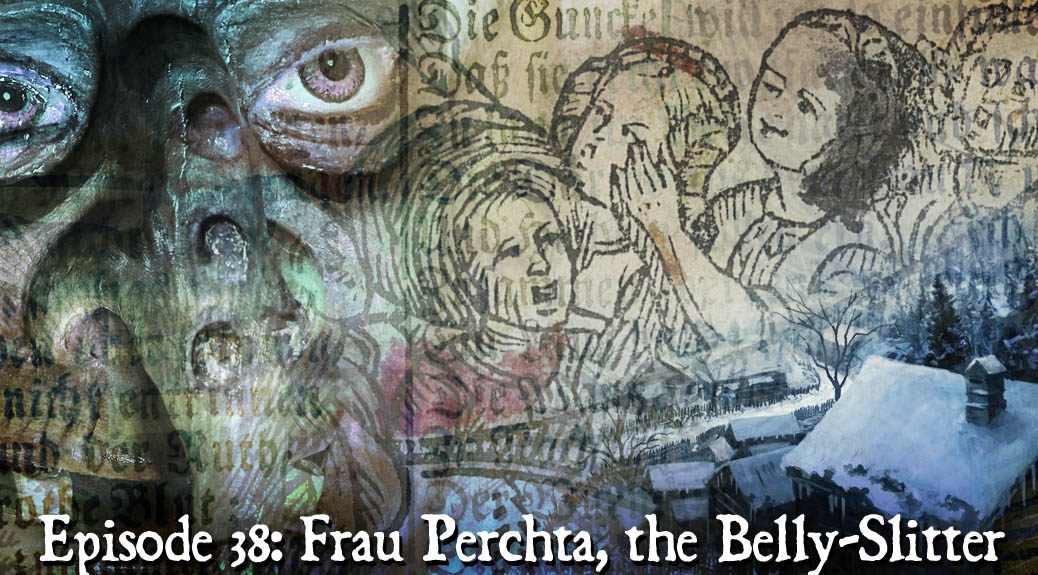
Frau Perchta, the Belly-Slitter
Podcast: Play in new window | Download (Duration: 42:18 — 38.7MB)
Subscribe: Apple Podcasts | Spotify | Android | Podchaser | RSS | More
Frau Perchta, sometimes known as “the Belly-Slitter” for the trademark punishment she’s said to inflict on disobedient or lazy children, is figure of Alpine folklore of Austria and Germany in many ways similar to the Krampus.
“Perchta” is only one spelling or name for this figure, who may also go by Pehrta, Berchte, Berta, and a myriad of other names. A particularly good representation of the figure, a woodcut from 1750, identifies her as the “Butzen-Bercht,” with the word “Butzen” coming from a word for “bogeyman.” This word also appears in a classic 19th-century German children’s song and game “Es Tanzt Ein Bi-Ba Butzemann,” or “A Bogeyman is Dancing,” from which we hear a clip at the show’s start.
The woodcut in question depicts a crone-like character with dripping, warty nose, who is carrying on her back a basket filled with screaming children, all girls. She stands before the open door of a house where more girls are screaming, and is holding a dangerous looking pronged staff as well as a distaff, the stick used to hold fibers that will be spun into wool or flax on a spinning wheel. The importance of the illustration is the way it emphasizes Perchta’s connection to spinning and to the females of the household responsible for this task. The woodcut also features some text delightfully detailing a series of horrid threats delivered by Perchta, dramatically read by Mrs. Karswell.
Perchta’s name it comes from her association with Epiphany or Twelfth Night, January 6, the last of the “Twelve Days” or nights of Christmas, the “Haunted Season,” we discussed last year in our episode of that name. “Perchta” is a corruption of the word giberahta in the Old High German term for Epiphany, “giberahta naht,” meaning, the “night of shining forth or manifestation.
Now there’s another name many of you will have encountered if you’re read up on Perchta: Perchten, figures very similar to the Krampus. (Perchten is plural. The singular is Percht.)
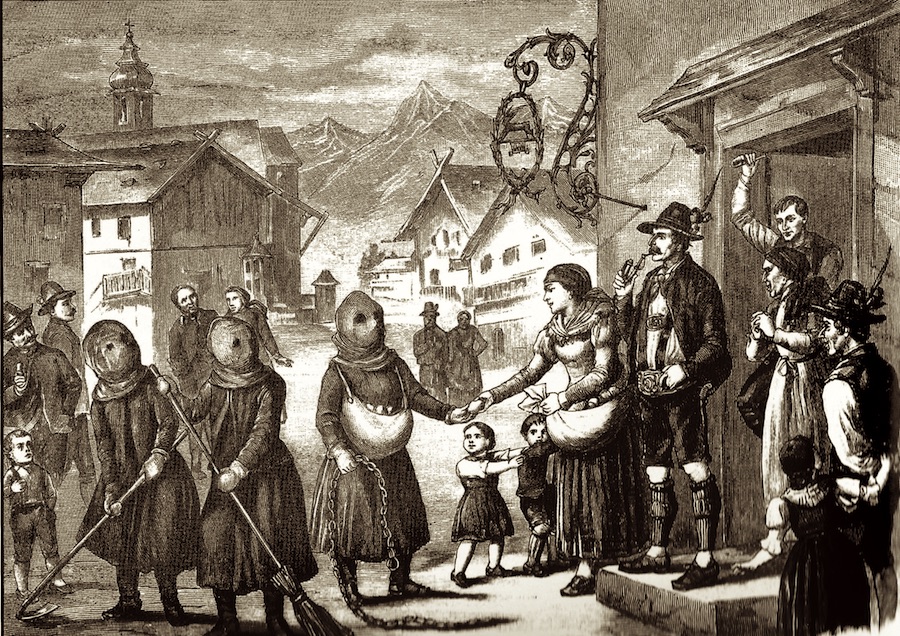
While the first mention of Perchta appears around 1200, the word “Perchten” is not employed until centuries later. In 1468, there appears a reference to her retinue, but its members are not called Perchten, nor do they explicitly resemble Perchten as we think of them today. At this stage in Perchta’s mythology, the company she leads is most often understood as spirits of the departed. With time, and frequent attacks from the pulpit, Perchta’s pagan company came to be commonly feared not as ghosts but as demons, something presumably closer to the horned figures we now know. By the 15th century, a tradition involving costumed processions or appearances of these figures had evolved. The very first illustration we have of Perchta seems to show not the figure herself, but in fact a masker impersonating “Percht with the iron nose.” It appears in South Tyrolean poet Hans Vintler’s 1411 Die Pluemen der Tugent (“The Flowers of Virtue”).
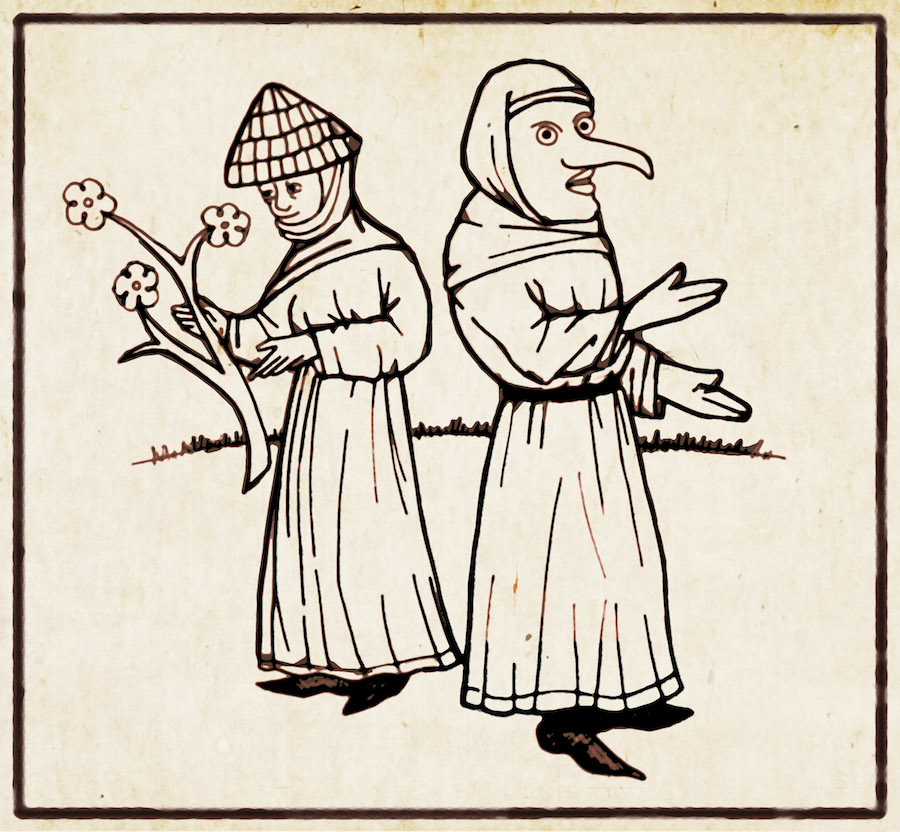
This beaklike nose of Perchta may be related the figure’s ancient connection to the classical strix (plural striges) which appears in both Greek and Latin texts. The strix is bird of ill omen, often thought of as an owl, one that visited at humans at night to feed on blood and flesh. Bird-like representations of Perchta or the Perchten appear in the Schnabelperchten (“beaked Perchten“) figures that appear in the town of Rauris, Austria.
In addtion to Perchta threatening to cut open the bellies of the disobedient, she’s sometimes said to stamp on those who offend her. In certain regions, it is the Stempe, or the Trempe (from the German words for “stamp” or “trample”) who appears to frighten the disobedient on Twelfth Night. A medieval poem, alluding to the terrible Stempe, one quoted in Grimm’s Deutsche Mythologie, is read by Mrs. Karswell.
One way to avoid Perctha’s wrath was to prepare certain foods, particularly a porridge called Perchtenmilch, which would be partially consumed by the family on Twelfth Night with a portion set aside as an offering to the Perchten. Certain signs, that the porridge had been enjoyed by the night-traveling spirits could provide omens for the coming year. Mrs. Karswell reads an Austrian account from 1900 detailing these.
This custom of leaving out offerings on this night was frequently condemned by the clergy in Austria and Germany, and we hear similar practice involving the Swiss “Blessed Ones” (sälïgen Lütt) derided in an 17th-century account by Renward Cysat, a city clerk of Lucerne.
The dead who accompany Perchta and consume these offerings are in many tales called the Heimchen, the spirits of children who have not received baptism. Several tales of Perchta and her Heimchen from Jacob Grimm’s Deutsche Mythologie are recounted.
Our episode concludes examining a peculiar connection between Perchta and the beloved English and American figure of Mother Goose.
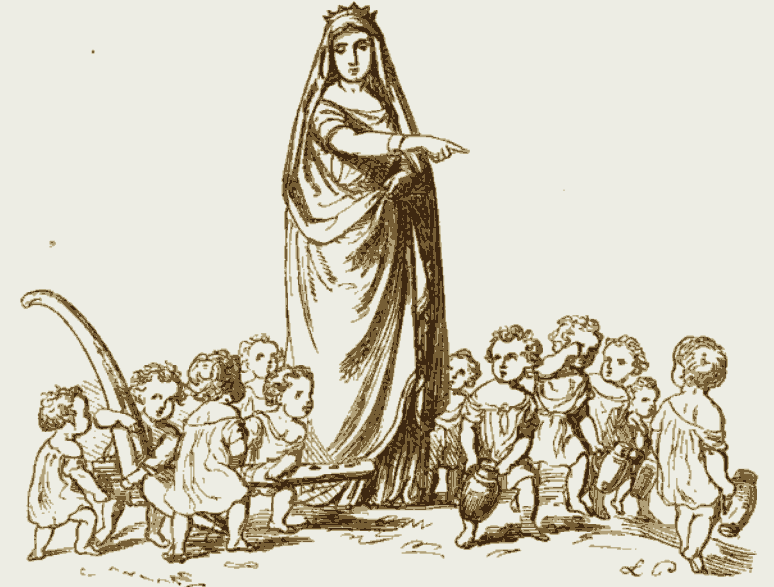
(Material in this episode taken from my book, The Krampus and the Old, Dark Christmas.)
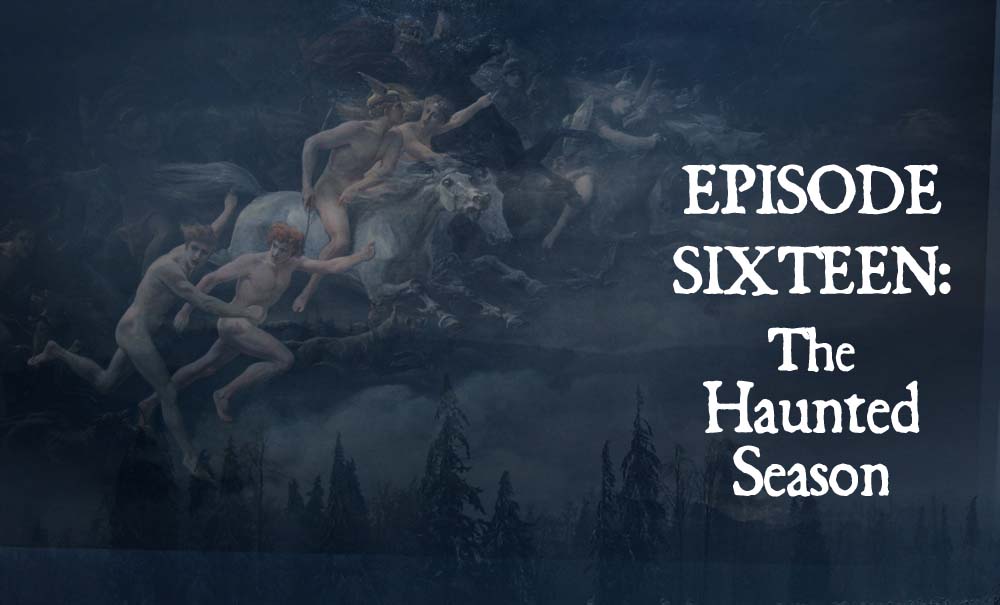
#16 The Haunted Season
Podcast: Play in new window | Download (Duration: 37:27 — 51.4MB)
Subscribe: Apple Podcasts | Spotify | Android | Podchaser | RSS | More
Historically, Christmastime in Central Europe was a season haunted by otherworldly spirits, werewolves, ghostly huntsmen, and wandering hordes of lost souls. This is particularly the case in the Krampus’ homeland of German-speaking Central Europe.
We open with a survey of the various frightful spirits said to be afoot this time of year. Bavaria, particularly the Bavarian Forest turn out to be particularly rich in such things, menaced by everything from spirits of the forests (Schratzn) and marshes to entities said to reside in mills, and historic castles. Historical figures with unsavory reputations including the legendary cowherd Woidhaus-Mich, Chatelaine Maria Freiin of Castle Rammelsberg and the Bavarian outsider prophet Mühlhiasl of Apoig are said to return as evil spirits this time of year. We hear a brief clip from Werner Herzog’s 1976 production, Heart of Glass, a lovely and peculiar treatment of Mühlhiasl’s story.
Just as the Krampus appears as an evil counterpart to St. Nicholas on his feast day (and its eve), we encounter other frightful creatures from German culture said to represent similarly sinister incarnations of other saints celebrated in December. From the Upper Allgäu region of the Bavarian Alps, there are the moss-encrusted Bärbele (“Barbaras”), or sometimes “Wild Barbaras,” and throughout Bavaria and Austria, St. Lucy was also inverted on her day (Dec. 13) as the “Luz,” or “ugly Lucy,” an entity particularly hungry for blood and ghastly punishments. We also meet “Bloody Thomas,” a figure appearing on the eve or night of St. Thomas Day, December 21.
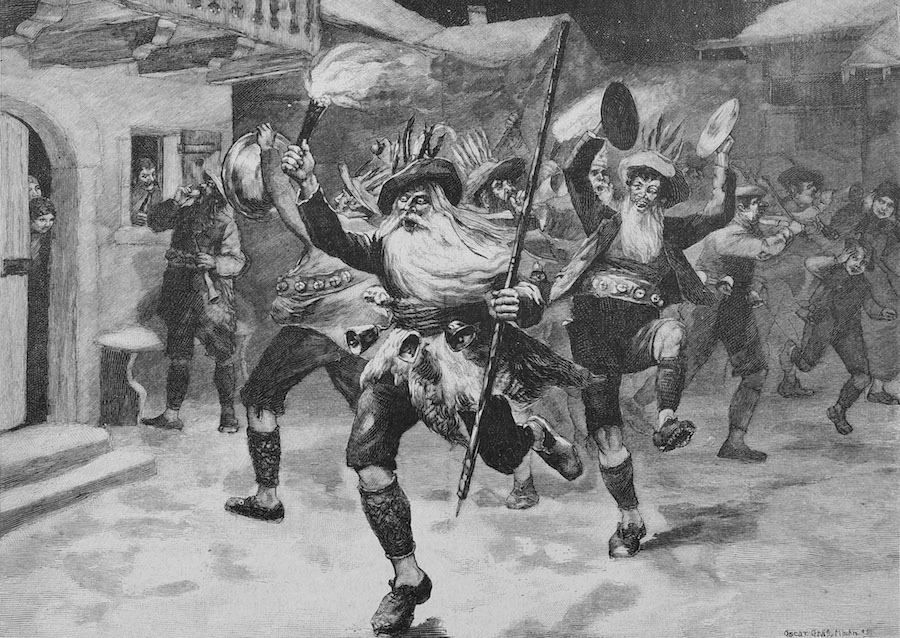
Next we consider a raft of superstitions associated with the Twelve Nights, or Rauhnächte, a name likely derived from the German word for “smoke” (Rauch) thanks to the use of incense during these nights to dispel evil influences.
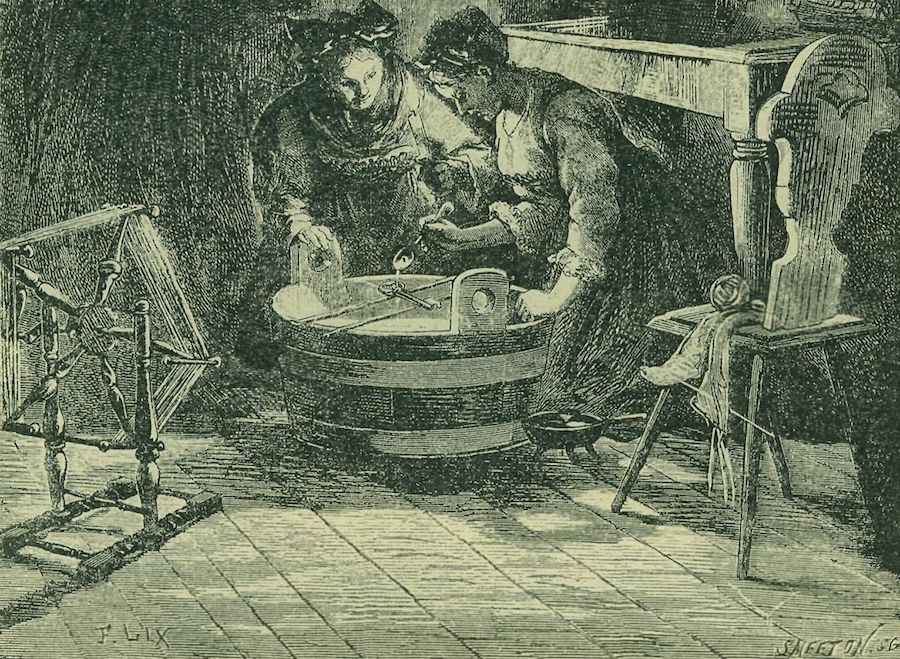
Of all the terrors unleashed during the nights around Christmas, the most widespread in German-speaking lands were those ghostly hordes in nocturnal processions, dead souls, solemnly walking, or wildly riding, the latter usually going under the name of “Wild Hunt” or “Furious Army.” This mythologem is prevalent throughout Central Europe, Scandinavia, the British Isles, and even North America, where the spirits appear in cowboy legends, and made their way into the 1940s country-western ballad “(Ghost) Riders in the Sky.”
Wilkinson reads for us some rather dramatic (and grisly) accounts of this form of apparition from the 16th century, and we hear a variety of accounts emphasizing the weird sounds that were said to accompany the Wild Hunt.
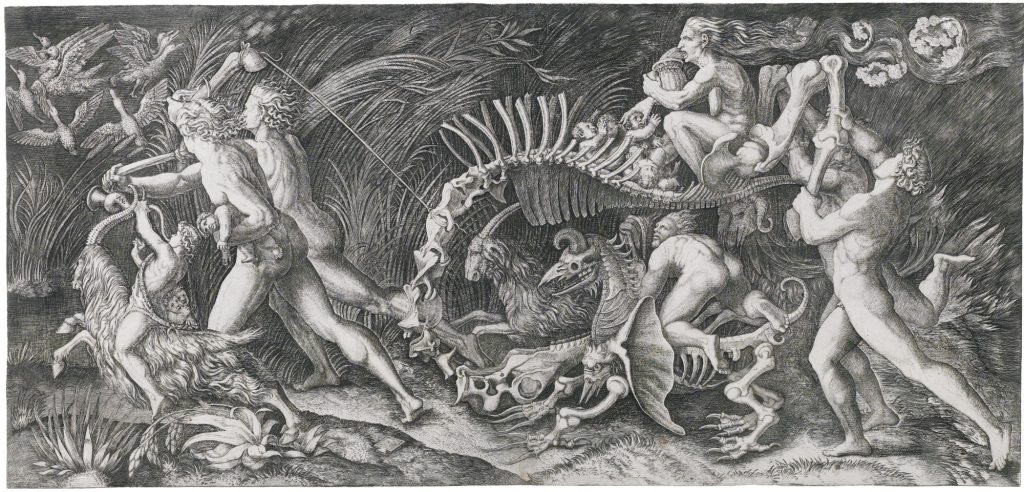
A number of figures were presented as the leader of the Wild Hunt, in particular the Germanic god, Odin, whose presence was associated with the superstition all the way into the 1800s as we hear from a newspaper account of the period.
We close the show with some folk tales recounting a similar phenomena in Austria and Switzerland, namely tales of the “Night Folk,” or “Death Folk,” nocturnal hordes whose appearance often heralded death or misfortunes.
European Krampus Tour Invitation
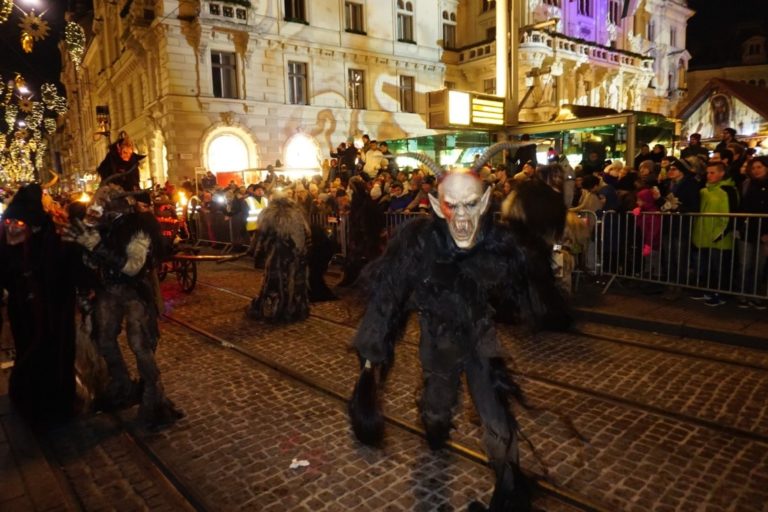
Have you ever wanted to experience an actual European Krampuslauf?
This winter (11/30-12/7) Bone and Sickle host, Al Ridenour will be hosting Geek Nation Tour’s “Kristmas with Krampus” trip to Austria and Bavaria where you can encounter not dozens but hundreds of the beasts in authentic costumes. He will be sharing Krampus lore from his book The Krampus and the Old Dark Christmas throughout the tour.
Included are TWO BIG KRAMPUS RUNS in SALZBURG and GRAZ as well as visiting other sites with the sort of darker, offbeat appeal that Krampus fans are sure to savor.
Other highlights include:
VIENNA: Anatomical Pathological Museum housed in the “Madhouse Tower” (former asylum). The semi-abandoned, gothically overgrown St. Marx cemetery where Mozart is interred. SALZBURG: “Mountains & Mythology” tour and ‘Hidden Corners” tour of the 12th-century Hohensalzburg fortress, accessing parts of the castle not normally visited. MUNICH: The famous bejeweled skeleton of St. Munditia in the St. Peters church. BERCHTESGADEN: world’s oldest functioning salt mine tour including boat trip across underground salt lake.
There will be plenty of unscheduled time for planning your own afternoon excursions.
PLEASE SEE LINK FOR COMPLETE DETAILS AND COSTS: http://geeknationtours.com/tours_post/kristmas-with-krampus-2018/
